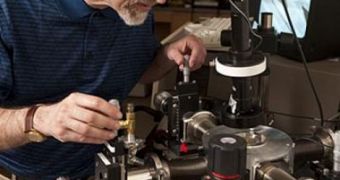Scientists at the Johns Hopkins University (JHU) have recently come up with a new use for an existing electrical conductor, a material that allows electrical currents to flow through it. By changing its orientation inside devices, the material can now be turned into a thin-film isolator that blocks current, but that favors the transport of charges elsewhere. The material could be of great use to the transistor industry, and could ultimately lead to a number of improvements in building electronics readers and similar devices.
The innovative material is called solution-deposited beta-alumina, and its effects in the new setup are detailed in an advanced online issue of the respected scientific journal Nature Materials. The paper will also appear in print, in the November edition of the same magazine. “This form of sodium beta-alumina has some very useful characteristics,” the supervisor of the investigation work, JHU Professor of Materials Science and Engineering Howard E. Katz, says.
“The material is produced in a liquid state, which means it can easily be deposited onto a surface in a precise pattern for the formation of printed circuits. But when it's heated, it forms a solid, thin transparent film. In addition, it allows us to operate at low voltages, meaning it requires less power to induce useful current. That means its applications could operate with smaller batteries or be connected to a battery instead of a wall outlet,” he adds.
The material is extremely thin, the expert adds, measuring only around 100 atoms in thickness. This reduced size makes it an ideal option for electronic readers, a class of devices that is gaining increasing popularity among consumers. The innovative, new way of utilizing the sodium beta-alumina could also be put to use in creating Heads-Up Displays (HUD), which would show relevant information on the windshields of cars, trucks, boats or airplanes. This would eliminate the need of the driver or pilot having to look downwards towards the gages.
Funding for the research was provided by the US Department of Energy (DOE), the US Air Force (USAF) Office of Scientific Research, and the National Science Foundation (NSF). Professor Katz's team has already filed a claim for international patent protection for its discovery. “The material acts as an insulator instead of a conductor. Our team was the first to exploit this discovery,” the expert adds.

 14 DAY TRIAL //
14 DAY TRIAL //